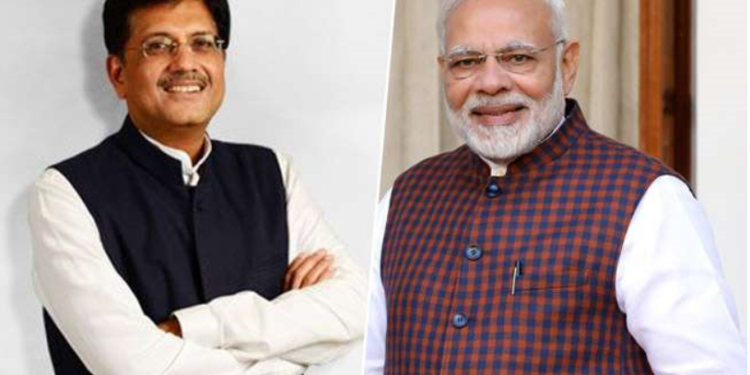The golden run of the Indian Railways under the leadership of Union Railways Minister, Piyush Goyal has continued as the Modi government has made a historic announcement of restructuring the railways organisation, thus departing from the 150-year-old legacy. To bring Harmony and efficiency in the functioning of Railways administration, the Modi government has unified the existing eight Group A services of the Indian Railways into a single Indian Service cadre called the Indian Railway Management Service (IRMS).
Apart from this, there are also going to be changes right at the top. The Railway Board, which is currently organised on departmental lines, will now be replaced by a leaner structure organised on functional lines. As per the new structure, the Railway Board will comprise of a Chairperson, who will be acting as the ‘Chief Executive Officer (CEO)’.
Apart from, there will be four other members on the board who will deal with Infrastructure, Operations & Business Development, Rolling Stock and Finance. Three apex posts in the Railway Board will be surrendered for making it leaner and more efficient. Regardless of the service that they are in, the remaining posts in the board will be open to all the officers, to ensure equal opportunity for all.
The Chairman will be the cadre controlling officer responsible for Human Resources (HR) and will be assisted by a DG (HR). Apart from organisational reforms, the Indian Railways is also set to witness the involvement of professionals. The Railway Board will have some independent members (the number to be decided by the competent authority from time to time) who will be highly distinguished professionals with deep knowledge and experience of 30 years at the top levels in industry, finance, economics and management fields.
With these reforms, the Modi government is looking to harmonise the functioning of Railways and is also looking to end the culture of departmentalisation and working in silos. Union Railway Minister, Piyush Goyal said that the merger of different services has been recommended by various committees in the two-day conference “Parivartan Sangoshthi” held in first week of December. He emphasised that unification of services will end the ‘departmentalism’ culture and promote the smooth functioning of the Railways.
With these reforms, the Railways will now start functioning as a truly unified, composite unit breaking the 150-year-old legacy of inefficiency and infighting over allocation of assets and resources and delay in decision making. The era of turf wars has made the Railways inefficient, but with this reform, the Railway officers will no longer have to be worried about protecting turns and services. This will foster a spirit of harmony in the Indian Railways that will lead to improved efficiency. Moreover, the current system leads to cost overruns due to inter-departmental conflicts and delays. However, once duplication of efforts and inter-departmental conflicts are prevented, faster implementation of projects will lead to a reduction in cost overruns as well. At a technical level, this will lead to skilling an improvement in services as the staff will get access to different jobs and specialisations.
Till now, the Railways have been functioning based on 150-year old colonial legacy. Unlike the corporatised railway systems across the world, the Indian Railways continues to function based on an obsolete structure characterised by a multitude of departments that are often involved in turf wars. This is going to change even as the Modi government overhauls the rail administration and structure. The Indian Railways is now going to become a composite, efficient entity.
The overhaul of Railways is yet another feather in the cap for the Indian Railway and Piyush Goyal, whose inspiring leadership has taken the Indian Railway to new heights. The Railways have witnessed several reforms and achievements in the recent past, including merger of Railway Budget with Union Budget, enhanced connectivity to different corners of India, Vande Bharat Express which is a major leap in technology and the first new train technology induction after the Rajdhani in 1967 and an excellent rail safety record with massive up-gradation of the signalling system. The present financial year is the first-ever for the Indian Railways with zero passenger deaths, showing the commitment of Railway Minister Piyush Goyal towards improving rail operations. Continuing his golden run as the Railway Minister, he is all set to oversee what can be described as the biggest overhaul and reform in Railway staff structure.


































